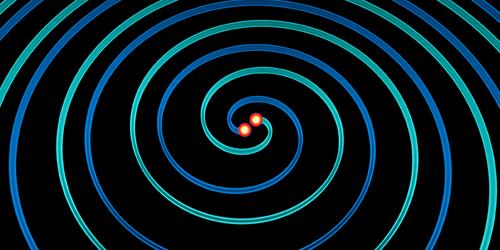Ionizing Black Hole “Atoms”
For decades, physicists have speculated about the existence of ultralight bosons. These hypothetical particles have the potential to solve myriad puzzles in physics, from the strong charge-parity problem to the dark matter mystery. But most proposals for detecting ultralight bosons assume a large particle abundance or a particular coupling to the standard model. Now, John Stout of Harvard University and his colleagues suggest a new detection strategy, based on gravitational-wave observations, that doesn’t depend on those assumptions [1].
The researchers build on previous work by team member Daniel Baumann of the University of Amsterdam (see Synopsis: Black Holes Could Reveal New Ultralight Particles). He and his colleagues used the fact that a cloud of ultralight bosons around a rotating black hole would occupy specific allowed orbits—like an electron orbiting a hydrogen nucleus. They found that if this black hole “atom” were involved in a merger with another black hole at certain points during the inspiral, the black holes’ orbits would become resonant with an allowed orbital transition of the boson cloud. Like an electron excited to a higher energy state by a photon, the cloud would be boosted to higher allowed orbits by the spiraling black holes.
In their new proposal, Stout and his colleagues focus on a later period of the inspiral, when the orbital speed is large enough to “ionize” the ultralight bosons, ripping them from the black holes’ gravitational grasp. They find that the resulting gravitational-wave signal should be significantly altered by this interaction, not only at discrete resonance points but continuously once the binary inspiral reaches the ionization threshold. The gravitational-wave frequencies at which this ionization occurs should be observable by future gravitational-wave detectors such as LISA.
–Katie McCormick
Katie McCormick is a freelance science writer based in Sacramento, California.
References
- D. Baumann et al., “Sharp signals of boson clouds in black hole binary inspirals,” Phys. Rev. Lett. 128, 221102 (2022).




